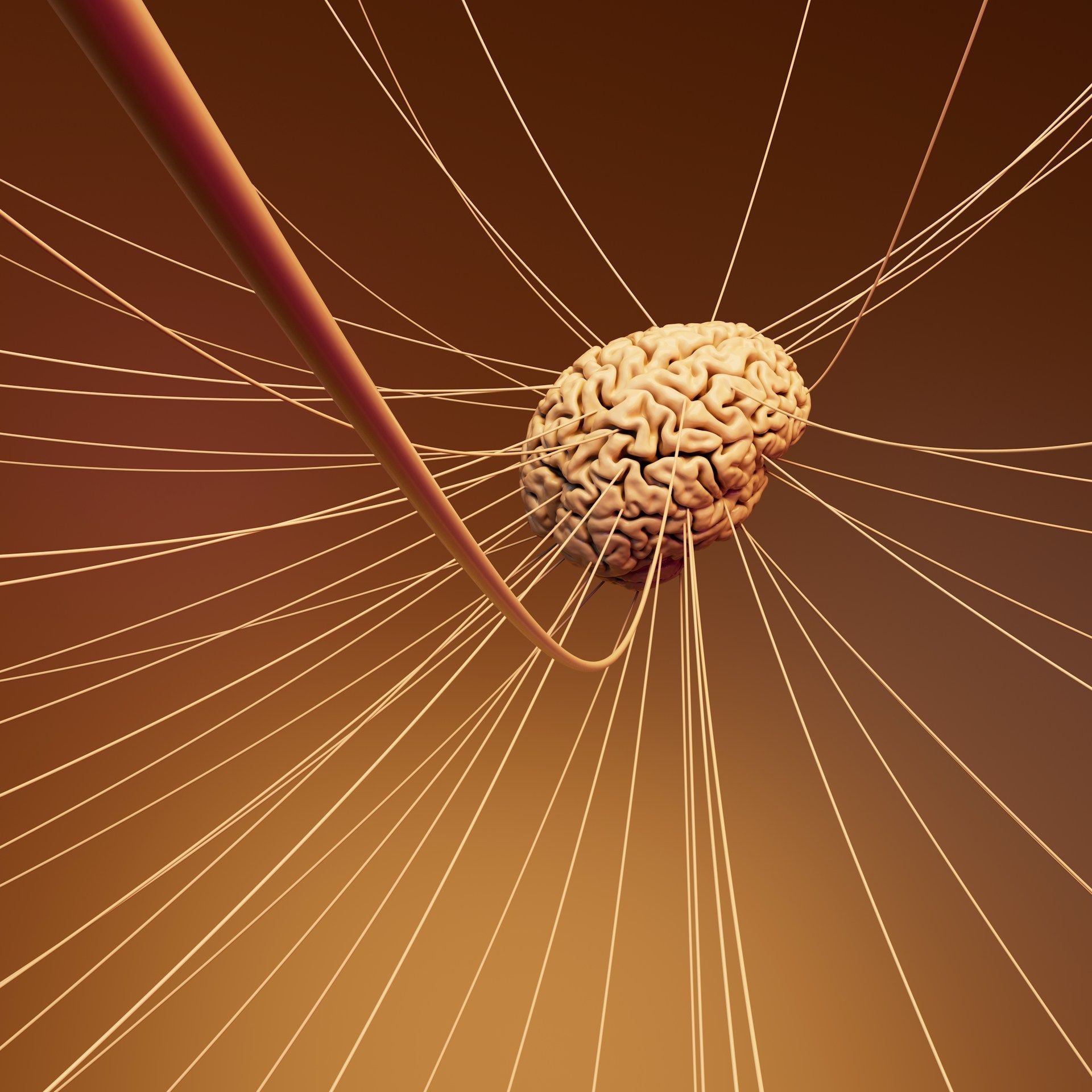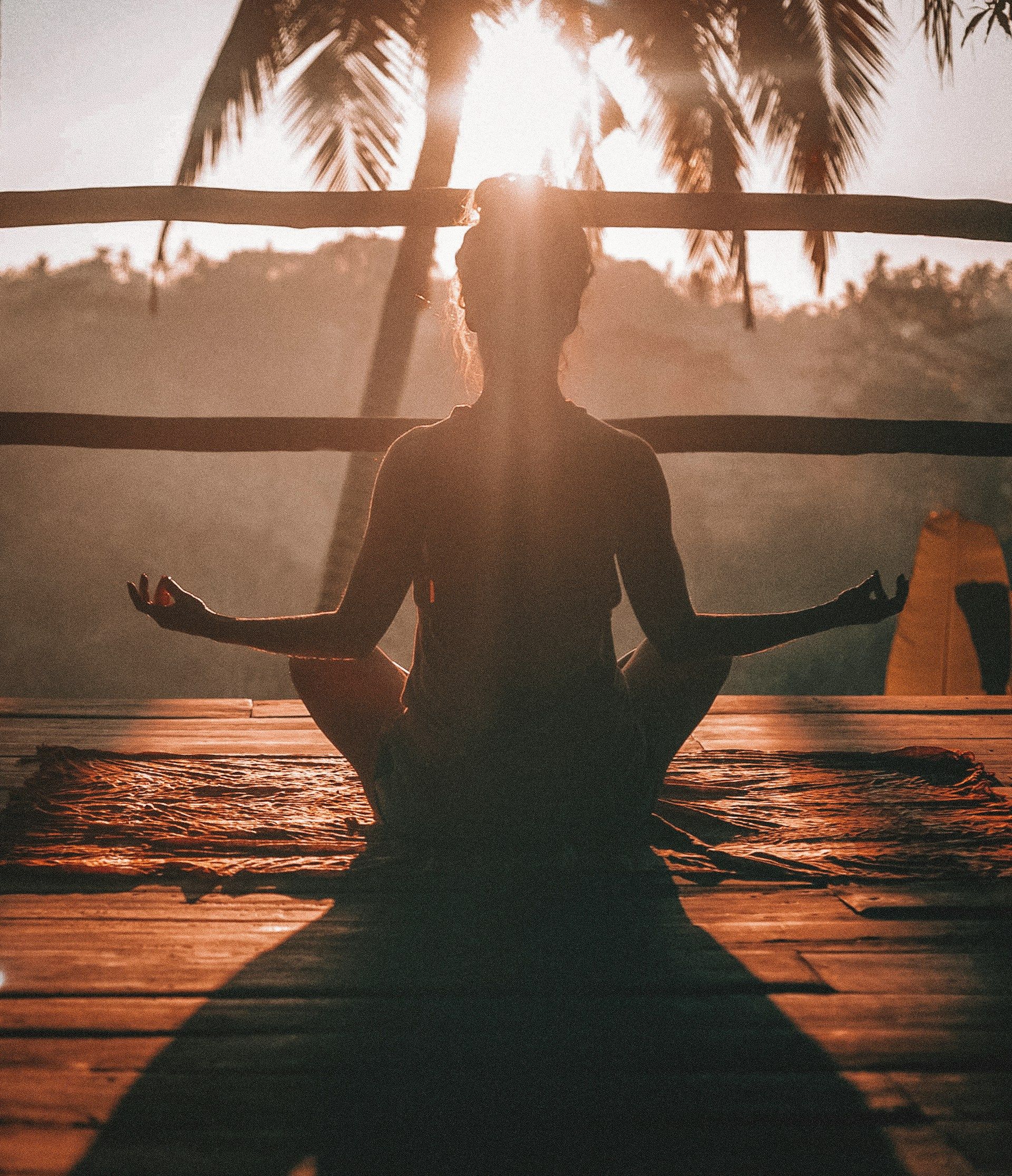What Does It Mean to Be Mindful of Your Thoughts?
Building awareness of your thoughts may greatly benefit your mental health
At the end of each Only in Sedona Yoga flow, we seal our practice by tapping our foreheads to remind us to be mindful of our thoughts. What does “being mindful of your thoughts” look and feel like in action? How can the work you do on the mat to develop mindfulness of thought affect your health? Here’s what to know.
How Talking to Your Mat Builds Mindfulness of Thought
How often do you pay attention to your thoughts as if you were an outsider examining what’s going on inside your head? Many of us take our thoughts for granted. We consider them inflexible, unchangeable, immutable, a part of our very personality, and who we are.
However, as I often say during our flows, you are not your thoughts or even your feelings, any more than you are your arm or your leg. Your thoughts are a component of you, but they are
not
you. Your thoughts are more like transient clouds drifting across your field of awareness before dissipating, gone forever into the ether. Don’t believe me? Tell me the exact thought you had at 2:43 yesterday afternoon. You can’t do it because that ephemeral thought has long since been replaced by countless others.
Even though each thought is transient, after a while, they begin to form patterns. These patterns affect your emotions and behavior, even if you aren’t consciously aware of the impact. It’s as if, over time, your brain programs its “favorite” channels like radio stations. It’s these patterns your brain returns to when it isn’t actively distracted by external noise or activity.
What Is Your Default Mode Network?
Your default mode network refers to a system of connected brain areas that become more active when you aren’t focused on external stimuli, like balancing your checkbook or keeping up with a rapidly changing conversation. It’s most active during introspection — such as when you are daydreaming or, worse, ruminating.
How Does the Default Mode Network Affect Mental Health?
People with depression often show increased connectivity in the default mode network, which researchers associate with increased rumination. It’s also more connected in the brains of lonely people. Additionally, people with autism show marked differences in this system’s organization, although researchers don’t yet fully understand how these variations affect their thoughts, moods, and behavior.
This association presents a bit of a chicken-and-egg question. Is it rumination that leads to increased connectivity, or does the increased connectivity spur the rumination? Most likely, it’s a bit of both, but based on what scientists know now, it could go either way.
What this means is that you might be able to “reprogram” your default mode network, at least somewhat, given sufficient time, dedication, and practice. How? The work begins by building mindfulness of thought on the yoga mat. It continues when you begin tuning into your thoughts throughout your day, gaining awareness of what’s going on in your head.
From there, you can take steps to reframe those thoughts that don’t serve you. “I’m always such a hopeless failure,” becomes, “Okay, I messed up in that job interview; let’s examine what went wrong, learn from it, and do better next time.”
Does this sound eerily like CBT? I think of it as CBT on steroids because once you get the habit, you begin examining your
thoughts for distortions in traffic. The grocery store checkout line. Hour two of that endless budget meeting, when your mind starts to wander.
Of course, this process is easier if you have a therapist’s help to identify your cognitive distortions. Unfortunately, not everyone has such a resource. However, anyone can begin building awareness of their thought patterns on the mat, anytime, anywhere, for free. From there, you can research further, learn to recognize distorted thoughts
by watching videos and reading books. The DIY route is harder but possible — we’re speaking from personal experience. It’s what inspires us to do what we do.
Here’s a good place to insert the standard disclaimer:
We at Only in Sedona Yoga are not doctors, paid researchers, or scientists. Please check with your doctor or therapist before taking any health advice you read here.
Tips for Building Mindfulness of Your “Default” Thoughts On And Off the Mat
Building mindfulness of your default thoughts on the mat begins with detaching from them enough to examine them free from judgment — and without going down a rumination rabbit hole. Time and regular practice are what make the habit stick and make mindfulness of thought routine. Try a month of daily practice, even for ten minutes daily, and test what happens when you do the following.
1. Go Outside Looking In
Detaching from your thoughts can be tricky at first. I like to use the visual device of a little neutral scientist with a notepad. She lives in my head, and when I talk to my mat, she writes down each thought I observe on a clean page, noting it, then immediately flipping to the next blank page. This simple visual prevents me from attaching to any one thought. Some people picture their thoughts as clouds or as cartoon word balloons.
What if you’re one of those folks who can’t
create visual images in their heads? Aphantasia is a real phenomenon, but speaking each thought out loud — or silently mouthing it if practicing with others — may help you build awareness. You might even try recording each thought for later playback if doing so helps you detach sufficiently to observe that “yes, I’m thinking X” then letting it go.
2. Use Your Tech
Nearly every cell phone has a timer. Set one for a minute or two — perhaps while you wait in that endless line — and tune into what’s going on in your head. Do you have a smart watch? Many versions come with meditation apps preinstalled, including those with sensory cues to remind you to take deep breaths as you reflect. You can also experiment with free meditation apps, although you’ll want to use a silent timer or soft music and not a guided version when building mindfulness of thought.
3. Practice Consistently
People come to the yoga mat for various reasons. However, just like a single session won’t miraculously transform your physical body into a gummy bear overnight, it won’t reprogram your mind after one session, either. For the magic to happen, you must be consistent. That’s one reason Only in Sedona Yoga produces weekly short flows so that you can practice mindfulness of thought (or simply stretch and relax) when you don’t have much time.
4. Be Proud of Yourself, You Mindful Yogi, You
Eventually, you will notice a greater awareness of your thought patterns both on and off the mat. I feel confident saying this because I wasn’t trying to build my own mindfulness of thought through yoga, at least not at first. Nevertheless, it happened. That miracle allowed me to handle some of my life’s most stressful events sober, when previously, I made matters worse by turning to the bottle.
When this happens to you, praise yourself, if only on the inside. For me, the magic first struck when I “lost” a $500 set of keys — and remaining calm instead of freaking out enabled me to find them. Anyone observing what happened from an outsider’s perspective would think nothing of what transpired, but the change inside me was undeniable. It still brings tears to my eyes because panic has been such a frequent bugbear in my life that I was shocked by my ability to resist an utter meltdown.
When it happens to you, you might, like me, find the ability to keep your composure a sufficient reward in itself. However, there’s also nothing wrong with marking the occasion with a small treat. Maybe a
new water bottle or mat? After all, you now have proof of your practice paying off, and trust me, that is a wonderful feeling indeed.
Become More Mindful of Your Thoughts
Many mysteries of mental illness and health remain unsolved by science, and not all psychologists agree that you can change your default thought patterns. However, the practice of CBT wouldn’t exist if others didn’t think there was hope.
Changing your thoughts begins with building awareness of them, and your mat is the perfect place to practice. The next time you practice your flow, try these tips for detaching from and observing your thoughts. Better yet, try it for a month and let us know about your results in the comments. With love and hope for healing always. ~ J.











